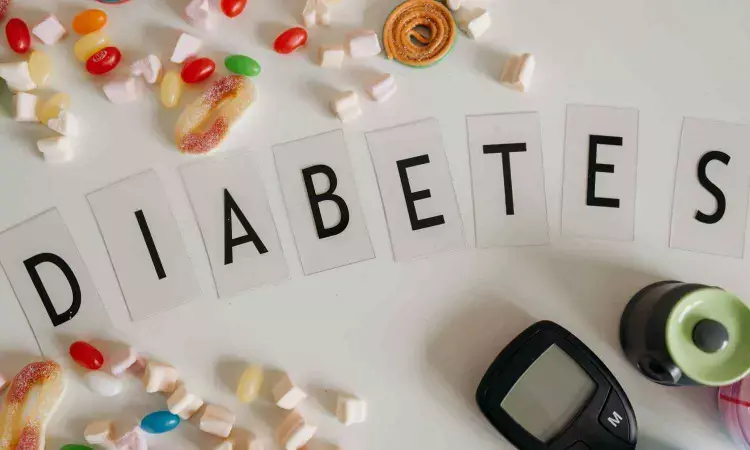- Home
- Medical news & Guidelines
- Anesthesiology
- Cardiology and CTVS
- Critical Care
- Dentistry
- Dermatology
- Diabetes and Endocrinology
- ENT
- Gastroenterology
- Medicine
- Nephrology
- Neurology
- Obstretics-Gynaecology
- Oncology
- Ophthalmology
- Orthopaedics
- Pediatrics-Neonatology
- Psychiatry
- Pulmonology
- Radiology
- Surgery
- Urology
- Laboratory Medicine
- Diet
- Nursing
- Paramedical
- Physiotherapy
- Health news
- Fact Check
- Bone Health Fact Check
- Brain Health Fact Check
- Cancer Related Fact Check
- Child Care Fact Check
- Dental and oral health fact check
- Diabetes and metabolic health fact check
- Diet and Nutrition Fact Check
- Eye and ENT Care Fact Check
- Fitness fact check
- Gut health fact check
- Heart health fact check
- Kidney health fact check
- Medical education fact check
- Men's health fact check
- Respiratory fact check
- Skin and hair care fact check
- Vaccine and Immunization fact check
- Women's health fact check
- AYUSH
- State News
- Andaman and Nicobar Islands
- Andhra Pradesh
- Arunachal Pradesh
- Assam
- Bihar
- Chandigarh
- Chattisgarh
- Dadra and Nagar Haveli
- Daman and Diu
- Delhi
- Goa
- Gujarat
- Haryana
- Himachal Pradesh
- Jammu & Kashmir
- Jharkhand
- Karnataka
- Kerala
- Ladakh
- Lakshadweep
- Madhya Pradesh
- Maharashtra
- Manipur
- Meghalaya
- Mizoram
- Nagaland
- Odisha
- Puducherry
- Punjab
- Rajasthan
- Sikkim
- Tamil Nadu
- Telangana
- Tripura
- Uttar Pradesh
- Uttrakhand
- West Bengal
- Medical Education
- Industry
Mitochondria may hold the key to curing diabetes, suggests study

Mitochondria are essential for generating energy that fuels cells and helps them function.
Mitochondrial defects, however, are associated with the development of diseases such as type 2 diabetes. Patients who suffer from this disorder are unable to produce enough insulin or use the insulin produced by their pancreas to keep their blood sugar at normal levels.
Several studies have shown that insulin-producing pancreatic β-cells of patients with diabetes have abnormal mitochondria and are unable to generate energy. Yet, these studies were unable to explain why the cells behaved this way.
In a study published in Science, researchers at the University of Michigan used mice to show that dysfunctional mitochondria trigger a response that affects the maturation and function of β-cells.
“We wanted to determine which pathways are important for maintaining proper mitochondrial function,” said Emily M. Walker, Ph.D, a research assistant professor of internal medicine and first author of the study.
To do so, the team damaged three components that are essential for mitochondrial function: their DNA, a pathway used to get rid of damaged mitochondria, and one that maintains a healthy pool of mitochondria in the cell.
“In all three cases, the exact same stress response was turned on, which caused β-cells to become immature, stop making enough insulin, and essentially stop being β-cells,” Walker said.
“Our results demonstrate that the mitochondria can send signals to the nucleus and change the fate of the cell.”
The researchers also confirmed their findings in human pancreatic islet cells.
Mitochondrial dysfunction affects several types of cells
Their results prompted the team to expand their search into other cells that are affected during diabetes.
Losing your β-cells is the most direct path to getting type 2 diabetes. Through our study we now have an explanation for what might be happening and how we can intervene and fix the root cause." -Scott A. Soleimanpour, M.D.
“Diabetes is a multi-system disease-you gain weight, your liver produces too much sugar and your muscles are affected. That’s why we wanted to look at other tissues as well,” said Scott A. Soleimanpour, M.D., director of the Michigan Diabetes Research Center and senior author of the study.
The team repeated their mouse experiments in liver cells and fat-storing cells and saw that the same stress response was turned on. Both cell types were unable to mature and function properly.
“Although we haven’t tested all possible cell types, we believe that our results could be applicable to all the different tissues that are affected by diabetes,” Soleimanpour said.
Reversing mitochondrial damage could help cure diabetes
Regardless of the cell type, the researchers found that damage to the mitochondria did not cause cell death.
This observation brought up the possibility that if they could reverse the damage, the cells would function normally.
To do so, they used a drug called ISRIB that blocked the stress response. They found that after four weeks, the β-cells regained their ability to control glucose levels in mice.
“Losing your β-cells is the most direct path to getting type 2 diabetes. Through our study we now have an explanation for what might be happening and how we can intervene and fix the root cause,” Soleimanpour said.
The team is working on further dissecting the cellular pathways that are disrupted and hope that they will be able to replicate their results in cell samples from diabetic patients.
Reference:
Emily M. Walker et al. ,Retrograde mitochondrial signaling governs the identity and maturity of metabolic tissues.Science0,eadf2034DOI:10.1126/science.adf2034
Dr Kamal Kant Kohli-MBBS, DTCD- a chest specialist with more than 30 years of practice and a flair for writing clinical articles, Dr Kamal Kant Kohli joined Medical Dialogues as a Chief Editor of Medical News. Besides writing articles, as an editor, he proofreads and verifies all the medical content published on Medical Dialogues including those coming from journals, studies,medical conferences,guidelines etc. Email: drkohli@medicaldialogues.in. Contact no. 011-43720751


